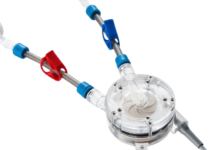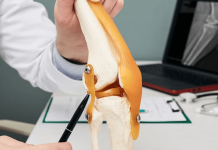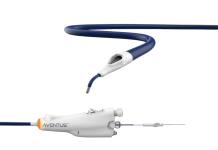HeartBeam has presented data demonstrating that its HeartBeam AI applied to vectorcardiography (VCG) technology outperformed an expert panel of heart rhythm cardiologists in detecting atrial flutter.
The data, presented at the Heart Rhythm Society Conference in Boston, US, showed that the HeartBeam AI and VCG (HeartBeam AI+VECG) combination significantly outperformed an expert panel in detecting atrial flutter. It had a 97.3% sensitivity compared to 69.4% for the panel using single-lead electrocardiograms (ECGs) – demonstrating a 40% improvement. It also showed a 6% improvement over the panel using 12-lead ECGs.
Related: CathRx says first-in-human data backs pulsed field ablation tech
The US-based company announced that it had made significant advancements to its AI technology, and appointed new leadership and advisory roles in December 2023. HeartBeam’s core vector electrocardiography (3D VECG) technology captures signals in three dimensions (X, Y, Z) to detail a 3D map of the heart’s electrical activity, translating them into an interpretable 12-lead ECG.
The company’s lead device is HeartBeam AIMIGo, a credit card-sized platform that remains in constant proximity with the patient, generating comprehensive data for AI applications. The objective of the device is to mimic the decision-making process of physicians, automating the evaluation of patients with cardiac symptoms. The integration of AI into the analysis process aims to enhance diagnostic accuracy.
Atrial flutter is a type of abnormal heart rhythm that causes rapid and irregular beating of the upper chambers of the heart. Patients can have symptoms such as palpitations, shortness of breath, and chest pain. The condition holds a risk of stroke and heart failure if left untreated.
Founded in 2015, Heartbeam has been acquiring patents over the last few years. The company secured two new patents from the US Patent and Trademark Office for its VCG technology earlier this year. It is the second patent related to the company’s watch concept; a device designed to combine continuous ECG monitoring with the ability to capture a high-sensitivity 12-lead ECG.
The wearable devices market continues to boom, with GlobalData’s Medical Intelligence Center forecasting that the sector will become a $291bn industry by 2030, increasing from $99.5bn in 2022. Sales of smartwatches are noted as a driver of growth in the market.
HeartBeam CEO Branislav Vajdic said: “The data is incredibly encouraging, showcasing the potential of our artificial intelligence programme to improve diagnostic accuracy when a patient is outside of a medical facility.
“We’ll continue to build upon this strong foundation as we advance our AI program to revolutionise cardiac care management in the future.”






